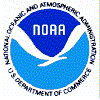 ®
® ®
®The summary shown here was taken from the following internet sites:
The term "remote sensing" is itself a relatively new addition to the technical lexicon. It was coined by Ms Evelyn Pruitt in the mid-1950's when she, a geographer/oceanographer, was with the U.S. Office of Naval Research (ONR) outside Washington, D.C.. No specific publication or professional meeting is cited in literature consulted by the writer (NMS) in which the words "remote sensing" were stated. Those "in the know" claim that it was used openly by the time of several ONR-sponsored symposia in the late '50s at the University of Michigan. The writer believes he first heard this term at a Short Course on Photogeology coordinated by Dr. Robert Reeves at the Annual Meeting of the Geological Society of America in 1958. As defined above, the term generally implies that the sensor is placed at some considerable distance from the sensed target, in contrast to close-in measurements made by "proximate sensing." (Sometimes given as "in situ" sensing), which can apply to some of the set-ups used in medical remote sensing. It seems to have been coined by Ms Pruitt to take into account the new views from space obtained by the early meteorological satellites which were obviously more "remote" from their targets than the airplanes that up until then provided mainly aerial photos as the medium for recording images of the Earth's surface.
A physical quantity (light) emanates from that screen, which is a source of radiation. The radiated light passes over a distance, and thus is "remote" to some extent, until it encounters and is captured by a sensor (your eyes). Each eye sends a signal to a processor (your brain) which records the data and interprets this into information. Several of the human senses gather their awareness of the external world almost entirely by perceiving a variety of signals, either emitted or reflected, actively or passively, from objects that transmit this information in waves or pulses. Thus, one hears disturbances in the atmosphere carried as sound waves, experiences sensations such as heat (either through direct contact or as radiant energy), reacts to chemical signals from food through taste and smell, is cognizant of certain material properties such as roughness through touch, and recognizes shapes, colors, and relative positions of exterior objects and classes of materials by means of seeing visible light issuing from them. In the previous sentence, all sensations that are not received through direct contact are remotely sensed.
A formal and comprehensive definition of applied remote sensing, as it is customarily formulated to include determination of geophysical parameters, is:
The acquisition and measurement of data/information on some property(ies) of a phenomenon, object, or material by a recording device not in physical, intimate contact with the feature(s) under surveillance; techniques involve amassing knowledge pertinent to environments by measuring force fields, electromagnetic radiation, or acoustic energy employing cameras, radiometers and scanners, lasers, radio frequency receivers, radar systems, sonar, thermal devices, seismographs, magnetometers, gravimeters, scintillometers, and other instruments
There are two special types of remote sensors - those that produce active microwave - radar - images and those that measure thermal properties. The satellite known as HCMM (Heat Capacity Mapping Mission. This operated during 1978 and produced scenes 700 km wide in three modes: Day Visible; Day (thermal) IR; and Night IR.